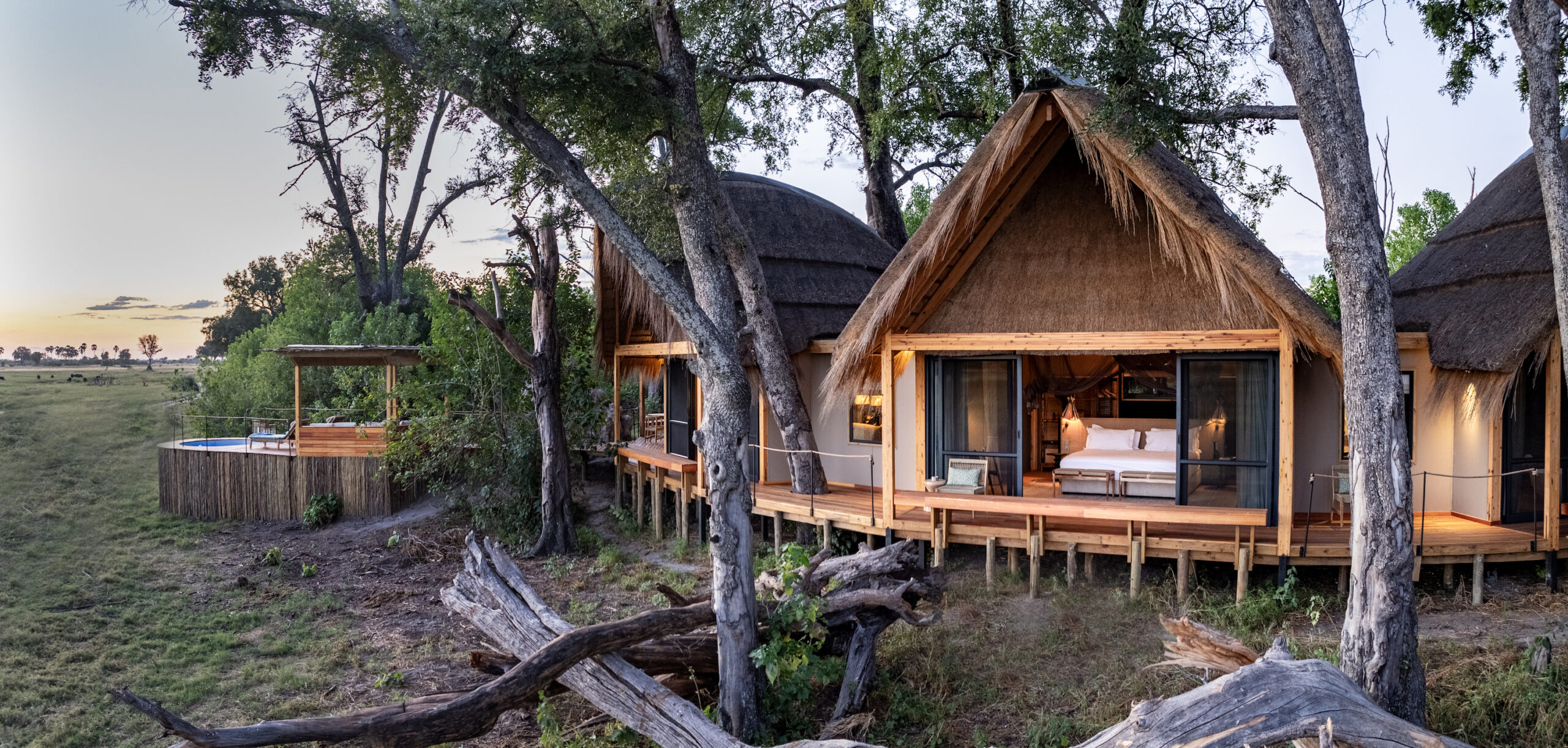NORTH STARS:
Community Support
Heritage Value
Wildlife & Ecosystems
“This low-volume, high-cost model is taken from what was happening in East Africa. Botswana made a deliberate choice. We are not going to go in that direction.”
Between the seasonal waterways of the Okavango Delta, the sands of the Kalahari Desert, and the expansive salt flats of the Makgadikgadi Pans, Botswana features some of the most remarkable landscapes and best lodges in southern Africa. The sparsely populated country is home to less than three million people and teems with wildlife, much of which roams in the near-pristine wilderness of Botswana’s 22 protected areas.
Appealing though its wild spaces (and wild dogs) may be to safari-goers, Botswana remains largely unbothered by the challenges of overtourism. Unlike the increasingly crowded Serengeti with its welcoming arms opened perhaps too widely, Botswana has taken something of a “you can’t sit with us” approach. Or rather, you can sit with them, but it’s going to cost you. Since the 1990s, Botswana has operated under a high-value, low-volume tourism strategy – a concept most easily demonstrated by its limited capacity luxury lodges.
Tawana, for example, is a new five-star property in the Natural Selection portfolio. It opened in the Moremi Game Reserve in May 2024 with all the trimmings – twice-daily game drives, a pool, a gym, incredible food, staff attuned to guests’ every need, and just eight suites. Each one overlooks the Gomoti River as it flows through an open plain, and the likelihood of animals appearing near one’s private terrace is indeed quite high. Catching up on emails one afternoon during my visit, I glanced up to see two elephants making their way toward my suite, scooting around the plunge pool at the end of the terrace to help themselves to tasty foliage nearby. At night, the sound of baboons squabbling at one another as they ran to and fro across my roof may have delayed my slumber, but even with my posh surroundings I felt deliciously connected to nature.
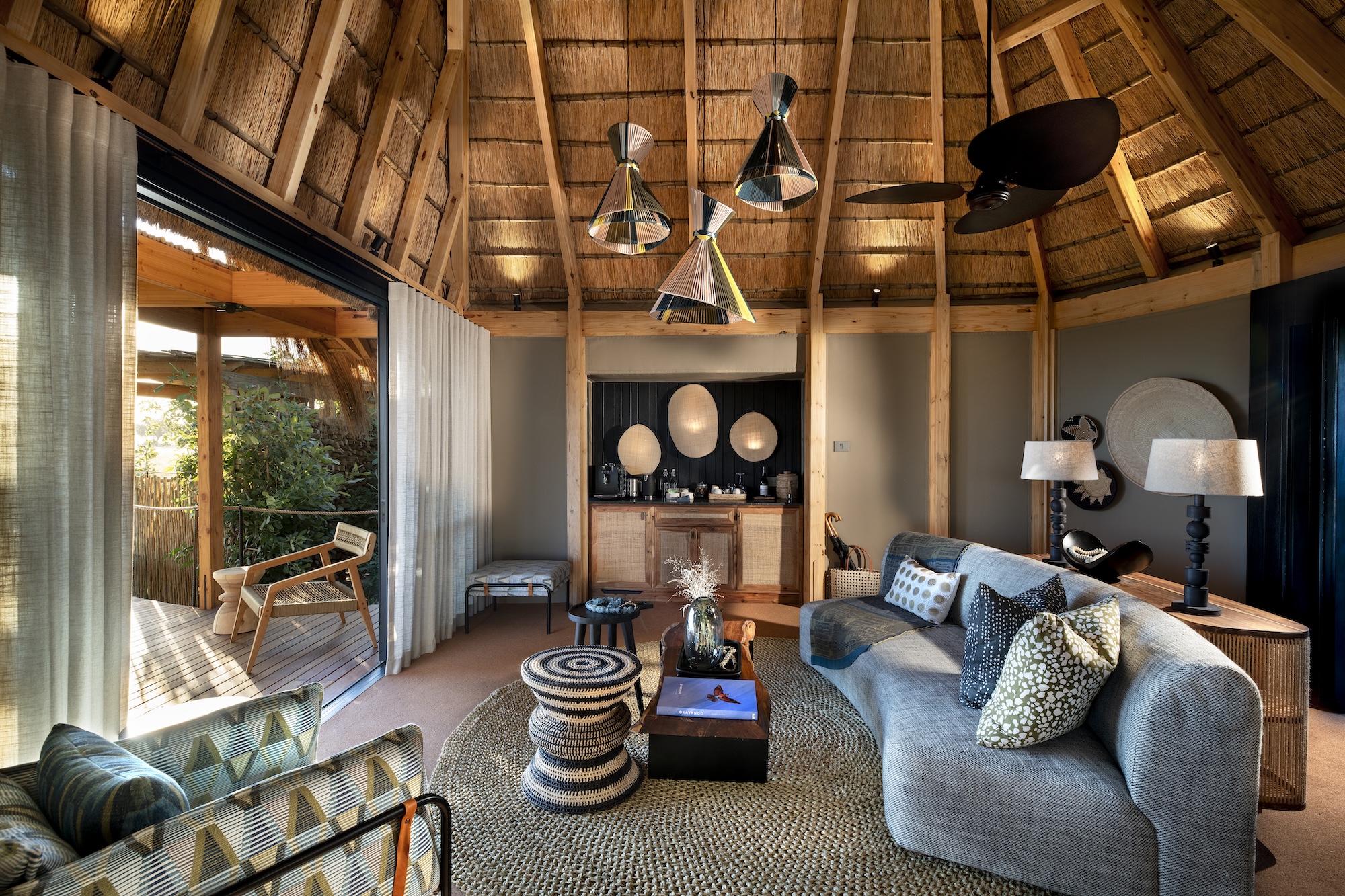
Tawana guest suite. Image Courtesy of Natural Selection.
This is exactly what Botswana does so well. The lodges may be expensive (Tawana starts at $3,710 per night for two adults in the low season, and can soar to $7,510 per night during peak times), but they’ll never be crowded. And that lack of crowds provides a more exclusive experience with less impact on landscapes and disruption to wildlife. In Botswana, there is virtually no such thing as a 30-vehicle pileup over a leopard sighting.
“This low-volume, high-cost model is taken from what was happening in East Africa,” says Chief Tawana Moremi. “Botswana made a deliberate choice. We are not going to go in that direction.”
Chief Moremi is chief of the Batawana tribe, an indigenous group whose people have long protected the wilderness in this area – the Tawana lodge was developed with and named after him. When it comes to opening new properties in Botswana, he says that care must be taken when considering zoning. “If we’re overusing nature, we have more traffic, more noise; all disturbing the peace of the wildlife.”
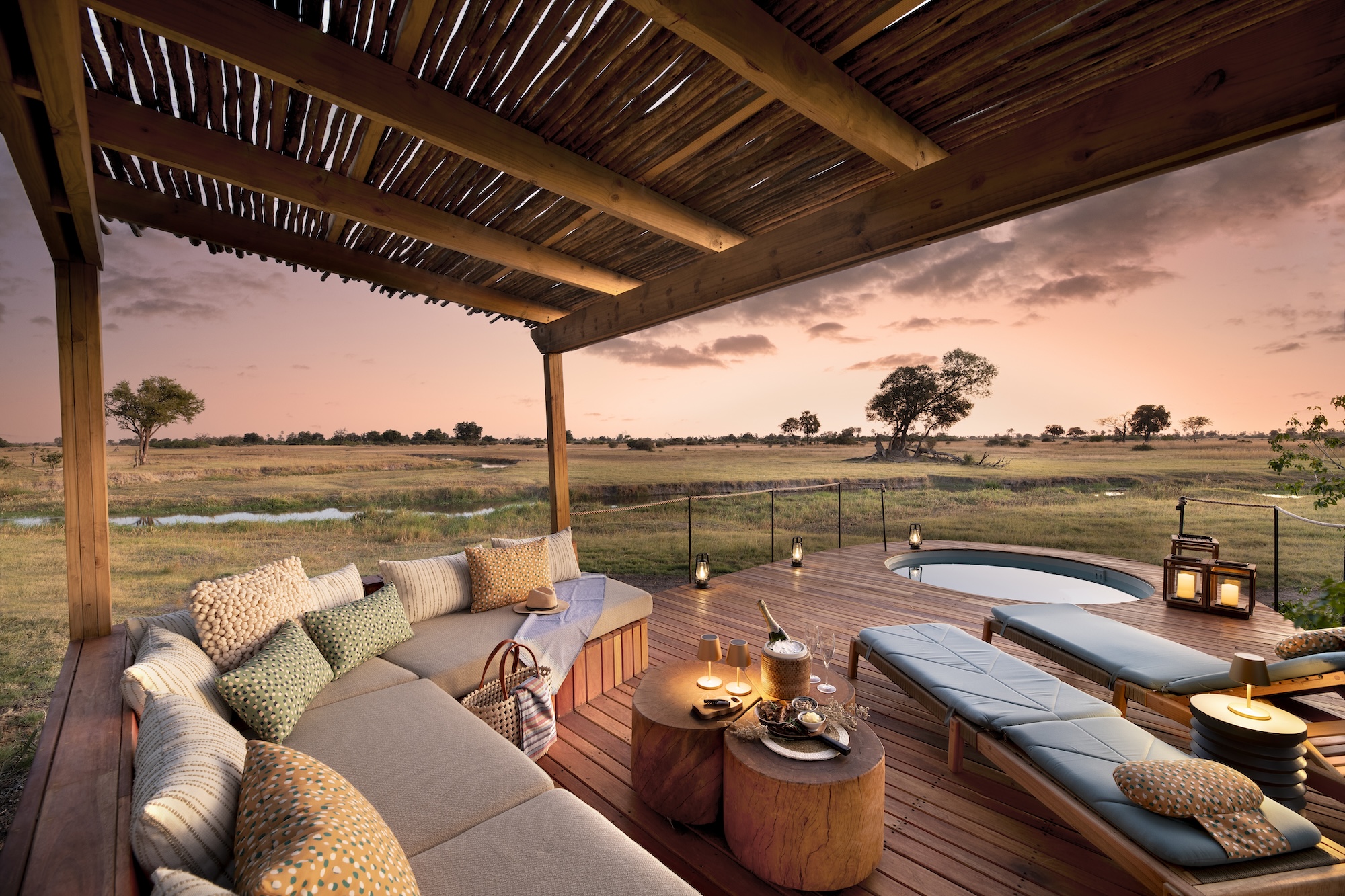
Private plunge pool at a Tawana suite. Image courtesy of Natural Selection.
Tawana’s remote location and modest bed count effectively minimizes impact, but with high prices comes inevitable exclusion. The question of whether only the wealthy should have access to the wildest of spaces is a nuanced one. Travel in any form is already a privilege, and what’s perceived as affordable versus expensive is highly subjective. If access is unfettered and crowds descend upon the Okavango Delta, not only will it become a less enthralling experience for visitors, the physical environment will suffer. When there will always be some people who can travel and some who cannot, where do we draw the line when it comes to delicate ecosystems?
Ben Morison, founder of ethical tour company Far and Wild, says that Botswana is “an absolute model” when it comes to an intentional approach to tourism. While he acknowledges the inequities of high pricing, Morison says it’s important to remember that there are other ways to experience a safari beyond checking in at a five-star lodge.
“The marketing is always going to be the fancy lodge with the private plunge pool. The image of Botswana is swayed disproportionately to what looks glossy and nice, but there’s a whole load of stuff happening all the time,” he says. “A lot of people visit independently – self-driving, overlanding, backpacking. You do get people at different points in their lives who are getting to experience Botswana and are making that connection to nature, to place.”
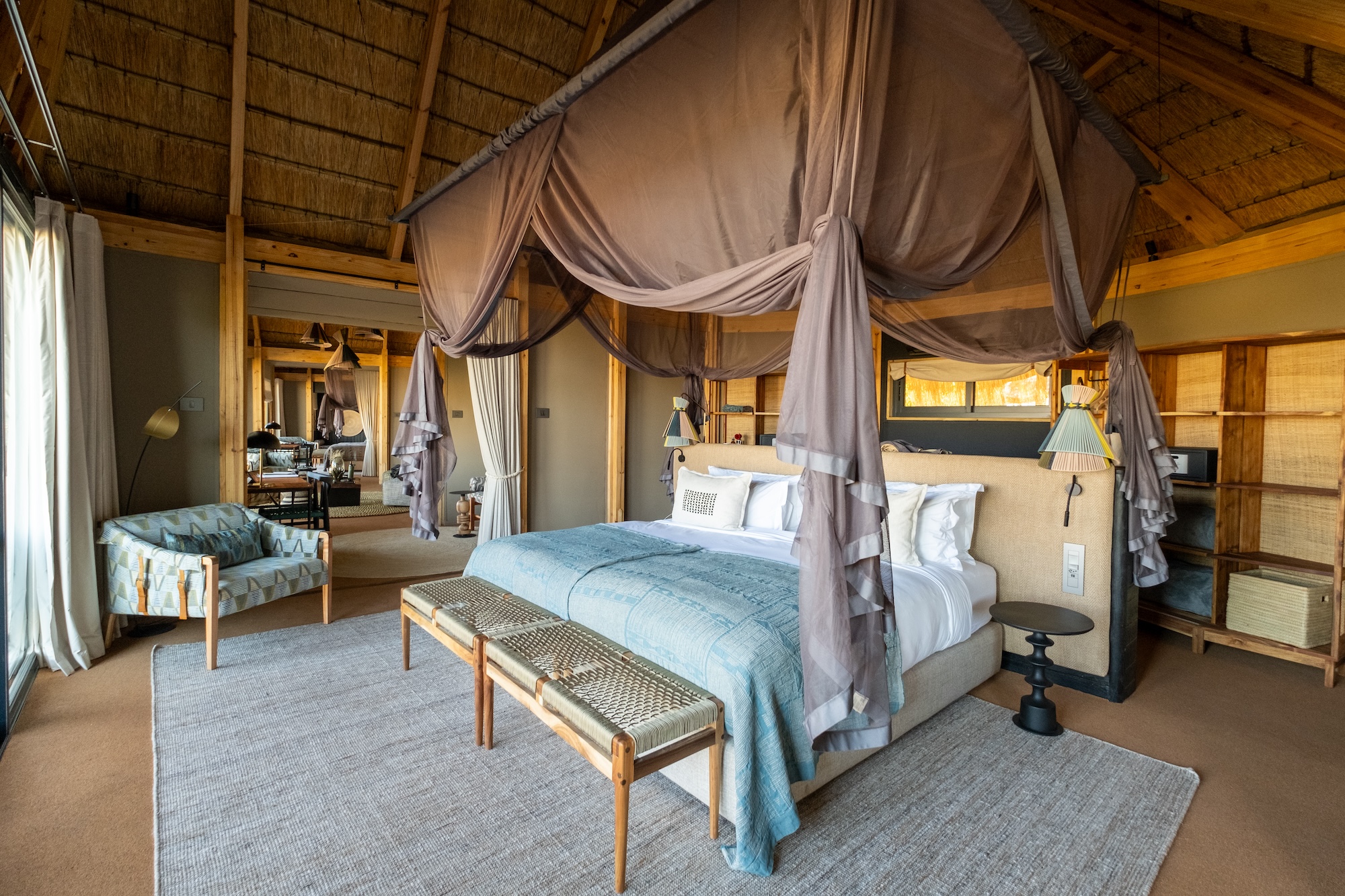
The interior of a Tawana suite. Image courtesy of Summer Rylander.
The Khwai region, for example, which sits between the Okavango Delta and Chobe National Park, does offer (comparatively) affordable camps and self-drive or mobile camping options that help make Botswana’s wilderness more financially accessible. Economic leakage – when revenue is routed to an outside economy instead of staying in the country which generated the tourism – should perhaps be of greater concern than price exclusion.
“I don’t have statistics to share offhand, but I do think that a lot of tourist dollars from these high-end places will be going straight out of Africa,” says Morison, who adds that he’s not convinced there’s a net benefit from the, say, $3,000 per person per night safari experience over one that costs $1,000 per night.
“If you are in the game of travel as a commodity,” he says, “and you’re saying what’s really important in what we offer is that we’ve got seven pillows on the bed instead of two, that is not a corporate organizational mindset designed for understanding net-positive travel.”
There may not be a specific number at which everyone agrees the pendulum swings from a reasonable price into an unnecessarily exorbitant one, but if the majority of a property’s profits are ending up in the pockets of an overseas CEO instead of staying in Botswana, how “sustainable” is that operation, really?
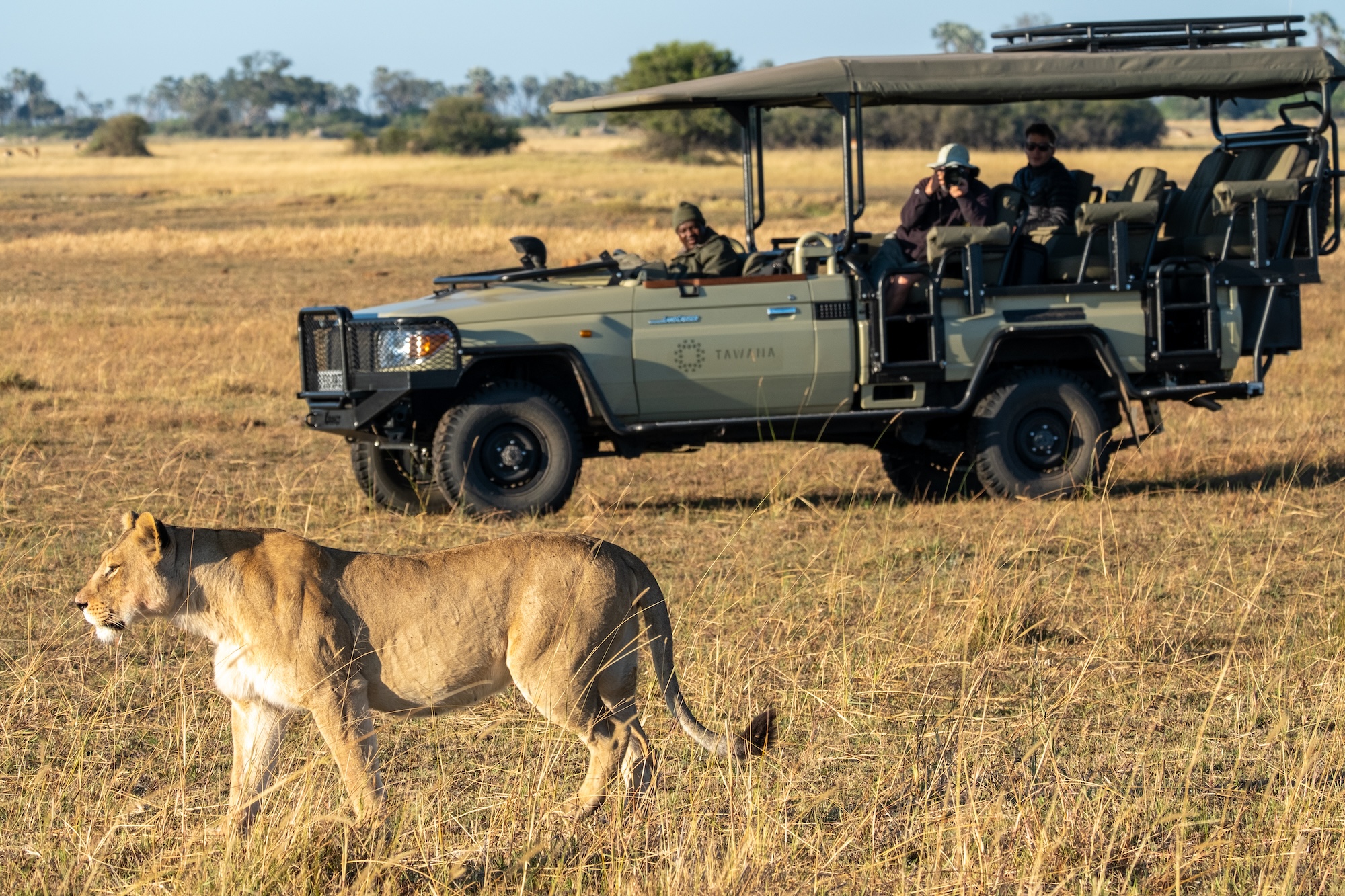
A 4×4 safari with Tawana. Image courtesy of Summer Rylander.
James Currie is the North American sales and new development manager for Great Plains Conservation, a safari company operating in Botswana, Zimbabwe, and Kenya. Great Plains is a big name in the safari space and its U.S. 501(c) nonprofit organization, Great Plains Foundation, takes a three-pronged approach to conservation by supporting land, wildlife, and community projects. Currie agrees that economic leakage is one of the fair criticisms of Botswana’s high-value, low-volume tourism model.
“You’ve often got wealthy, foreign-invested companies, which has a lot of that revenue leaking out of the country versus going back into the community. That’s where responsible operators are key,” he says.
According to Currie, corporate social responsibility is essential, and he states that none of the shareholders in Great Plains take an annual dividend.
“Everything goes back into local communities and conservation,” he says. “It’s not just about hiring local people, it’s about doing your best to uplift communities.”
I spent two nights at Great Plains Selinda Explorers Camp in Botswana’s Selinda Reserve. It’s a camp in the company’s most affordable tier, the Explorer Collection, and rates here start at $1,105 per person per night, rising to just under $2,000 in peak season. This is reasonably affordable by Botswana standards, yet the camp still slots nicely into the country’s low-volume model with just four tents.
“Tent” is a modest word; well-appointed and surrounded by trees and dense brush, Selinda Explorers is an ode to safari expeditions of the yesteryear. It’s quiet, cozy, and a lovely breeze drifted through my tent each night when I opted to keep the canvas sides rolled up for maximum bush immersion. And it’s very private. It is easy to imagine this camp as one pitched decades ago for research purposes – or, sadly, perhaps something more nefarious, acts against which Botswana’s tourism model plays an important role.
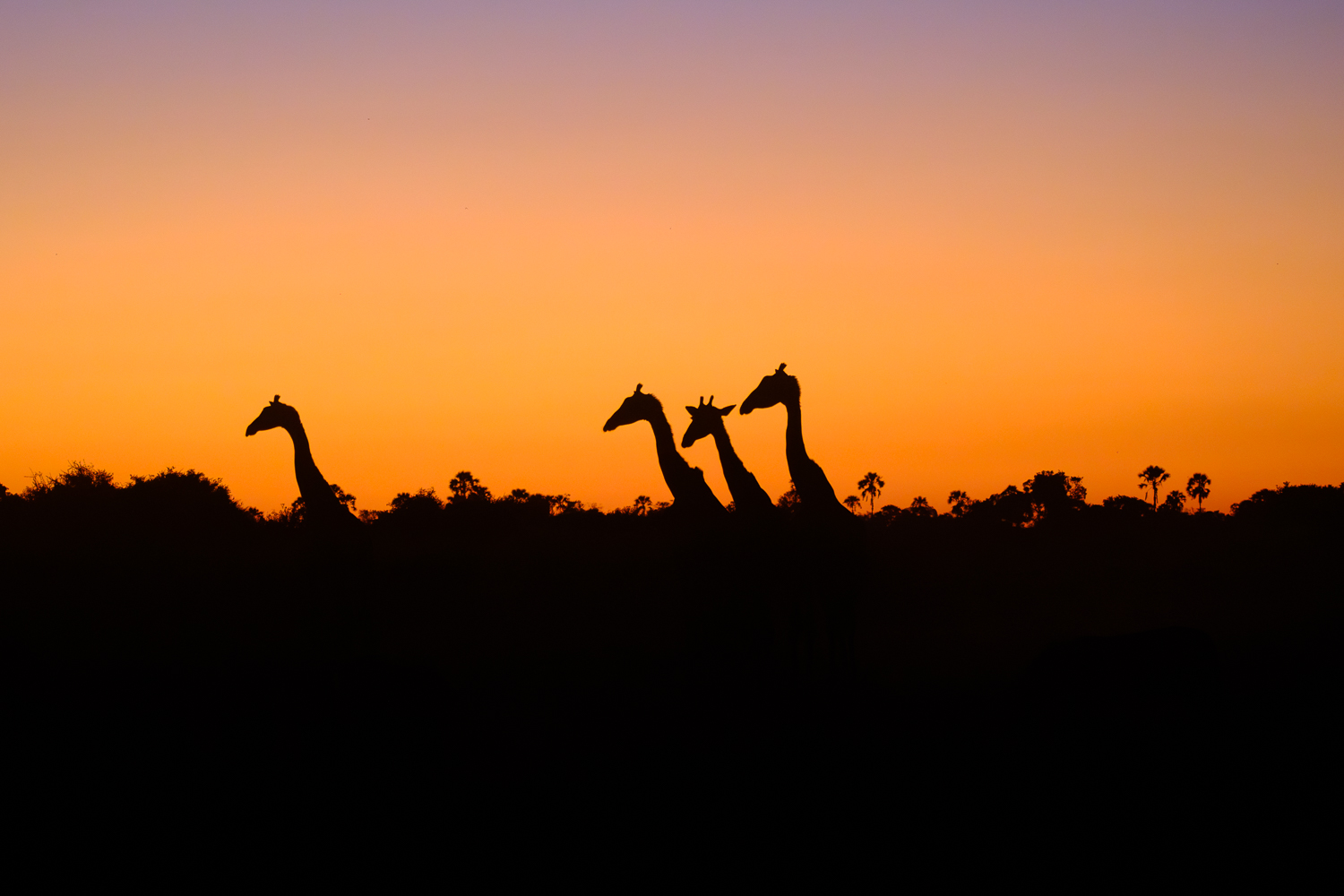
Giraffes at sunset. Image courtesy of Summer Rylander
“Where there’s a tourism presence, there’s a reduction in poaching,” says Currie. “When we’re able to secure a massive tract of wilderness that can go under conservation and tourism, the two go hand-in-hand.”
Ultimately, it’s about finding balance. Tourism is a necessary component of conservation. If people aren’t making money off of protected land, it will be repurposed, driving animals out of their environment and increasing human-wildlife conflict. And there’s the simple truth that we are naturally inclined to care more about something when there’s a personal connection. We can marvel at lions in a well-shot documentary, but it’s far more powerful to watch them from just meters away as they lie around like lazy housecats.
So, no, Botswana’s finest lodges may not be within reach of everyone who wishes to go on safari, but the same can be said of high-end properties all over the world. For now, the country’s tourism model is working well to protect land, protect wildlife, support communities, and deepen traveler interest in conservation.
“Far and Wild is putting a lot of people into Botswana on relatively modest budgets,” says Morison. “People who like rolling their sleeves up, sleeping outside, moving around – Botswana does that really well. It’s differentiated. It’s within reach as a premium safari experience and it’s absolutely bang-on. I feel like Botswana sits in the right place.”
Summer traveled to Tawana and Selinda Explorers with Audley Travel. A nine-night bespoke trip to Botswana starts at $20,800 per person (based on two traveling).

Summer Rylander is a freelance travel and science journalist covering positive-impact tourism and the conservation of our biodiverse planet. Follow Summer on IG @summeroutside.


